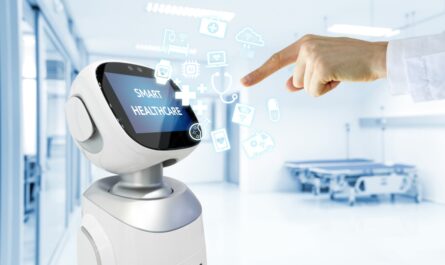Blood gas analysers are medical devices used to measure acidity (pH), carbon dioxide (CO2), oxygen (O2), and electrolyte levels in a patient’s blood. This helps doctors quickly diagnose and monitor conditions related to lung and kidney function. Blood Gas Analyzers is a valuable tool that provides critical information to guide treatment decisions.
Types of BGA
There are two main types of BGA: point-of-care (POC) devices and central laboratory analyzers.
Point-of-Care (POC) Analyzers
POC analyzers are portable devices that can be used near the patient in locations like emergency rooms, intensive care units, and operating rooms. Results are obtained within 5 minutes, allowing clinicians to make timely treatment decisions. POC analyzers require only a small sample, usually 70-120 microliters. This is advantageous as it minimizes the amount of blood drawn from critically ill patients. Major advantages of POC analyzers include convenience, speed, and availability of results at the site of patient care.
Central Laboratory Analyzers
Central laboratory Blood Gas Analyzers are larger bench-top devices located in hospital laboratories. They have higher throughput and can perform more complex analyses compared to POC devices. Blood gas samples are sent to the central lab where trained technicians perform the tests. While these analyzers provide highly accurate results, it can take 15-30 minutes to receive a report. By the time results are available, the patient’s condition may have changed. This delay can impact clinical decision making compared to rapid POC testing.
Parameters Analyzed by BGA
Blood gas analyzers measure the following key parameters needed for clinical diagnoses:
pH – Measurement of acidity or alkalinity in blood plasma. Abnormal pH outside the normal range of 7.35-7.45 can indicate respiratory or metabolic conditions.
pCO2 – Partial pressure of carbon dioxide measures how much carbon dioxide is dissolved in plasma. It is an indicator of respiratory status.
pO2 – Partial pressure of oxygen indicates how well oxygen is being delivered to tissues via circulation. Abnormal pO2 suggests respiratory complications.
Electrolytes – Sodium, potassium, ionized calcium and chloride levels are electrolyte parameters often analyzed. Imbalances may relate to kidney or other organ dysfunction.
Bicarbonate (HCO3-) – Measurement of acid-base buffer helps evaluate acid-base status and kidney function.
Oxygen saturation (sO2 or SO2) – Calculated value indicating proportion of hemoglobin bound to oxygen. It is a non-invasive surrogate of pO2.
Clinical Applications of Blood Gas Analysis
Blood gas tests are invaluable in the critical care management and monitoring of patients with conditions involving respiratory and renal systems. Some key clinical uses are:
Respiratory diseases – Help diagnose issues like pulmonary embolism, asthma, pneumonia, COPD or assess treatment for respiratory failure.
Kidney disease – Electrolyte parameters aid in dialysis management and detection of metabolic imbalances.
Cardiac conditions – Together with EKG and clinical evaluation, gases guide therapy for heart attacks, pulmonary embolism or cor pulmonale.
Anesthesiology – Intraoperative monitoring of gases minimizes complications from anesthetic management.
Trauma/surgery – Quick assessment of oxygenation, ventilation and circulation is vital for seriously ill surgical patients.
Toxicology – Poisoning from things like carbon monoxide or cyanide specifically targeted by blood gas analysis.
Newborn screening – Evaluation of acid-base status in infants for detection of disorders.
Advanced Technologies in Blood Gas Analyzers
In recent years, BGA have incorporated new detection methods and data management tools:
Electrochemical/optical sensor technology – More sensitive and specific sensors improve accuracy of pH, pCO2, pO2 measurements.
Electrolyte sensors – Advancements allow measurements of parameters like ionized calcium directly at point-of-care.
Connectivity – Networking capabilities allow electronic transfer of results between devices and hospital information systems.
Quality control – Built-in quality checks, calibration monitoring and system diagnostics ensure reliable performance.
Data management – On board data storage and creation of reports/trends aids longitudinal patient monitoring.
Analyte expansion – Newer analysers can detect additional critical care analytes like lactate and hemoglobin along with standard gases.
With continued technological evolution, BGA will facilitate fast, comprehensive critical care assessment that optimizes patient outcomes. Their role will remain indispensable for timely diagnosis and management of acutely ill patients.
*Note:
1. Source: Coherent Market Insights, Public sources, Desk research.
2. We have leveraged AI tools to mine information and compile it.
About Author - Ravina Pandya
Ravina Pandya, Content Writer, has a strong foothold in the market research industry. She specializes in writing well-researched articles from different industries, including food and beverages, information and technology, healthcare, chemical and materials, etc. With an MBA in E-commerce, she has an expertise in SEO-optimized content that resonates with industry professionals. LinkedIn Profile


 by
by 
